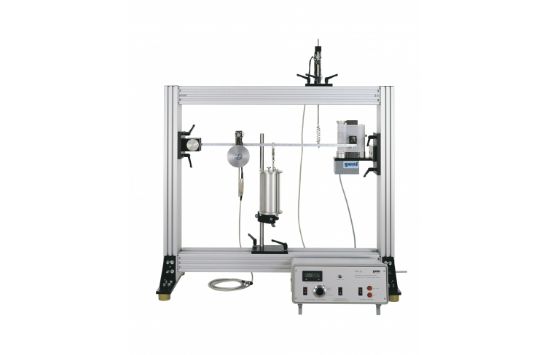Forced vibrations occur in a variety of ways in engineering. While they are desirable in vibrating screens or vibrating conveyors, they are often unwanted in engines or other rotating machines. The TM 155 experimental unit clearly demonstrates the fundamentals needed to deal with free and forced vibrations. The differences between the two main types of excitation for forced vibrations can be shown on a simple vibration model.
The central element of the experimental unit is a sturdy aluminium profile frame to which the different experimental setups are attached. A bar-type oscillator is used as the vibration system. This offers easy and flexible configuration.
The spring, damper and vibration exciter can be mounted in any position. An imbalance exciter and a displacement exciter are available for spring base-point excitation.
The excitation frequency is set and displayed on a control unit. An oil hydraulic damper allows damped vibrations with adjustable damping level. A mechanical drum recorder offers the option of recording the vibrations. The measured values can be displayed and analysed on a PC using the optional TM 155.20 unit for data acquisition. A demonstration unit for torsional vibrations (TM 150.02) is available as an accessory.

